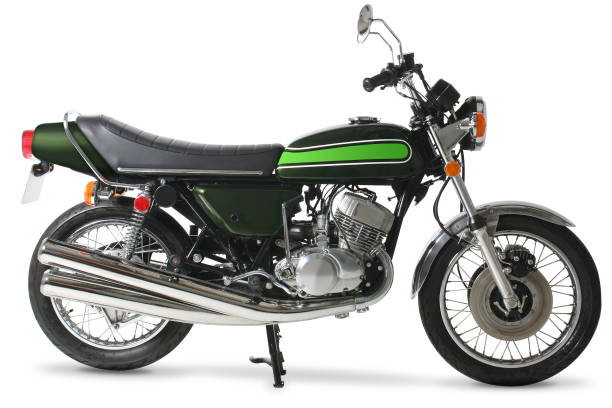Kawasaki Z H2: Unleashing Power and Performance in a Naked Superbike
The Kawasaki Z H2 is an extraordinary machine that pushes the boundaries of what a naked superbike can achieve. Born out of the high-performance lineage of Kawasaki’s H2 family, the Z H2 is a powerful combination of cutting-edge technology, blistering performance, and aggressive design. Launched in 2020, the Z H2 takes the naked sportbike segment to new heights, offering riders an adrenaline-fueled experience with a level of sophistication that few others in the class can match.
With its supercharged engine, advanced electronics, and aggressive styling, the Z H2 sets a new benchmark for naked bikes. It’s more than just a motorcycle; it’s an experience of unmatched performance, dynamic handling, and sheer riding pleasure. This article delves into the design, performance, and advanced features of the Kawasaki Z H2, exploring why it is one of the most thrilling bikes available today.
1. The Evolution of the Kawasaki Z H2
Kawasaki has a long and storied history of producing performance-oriented motorcycles, and the Z H2 is a continuation of that legacy. The bike shares its DNA with the Kawasaki Ninja H2, a flagship model in Kawasaki’s lineup that is known for its sheer power and groundbreaking supercharged engine. However, while the Ninja H2 is focused more on the full-on sportbike experience, the Z H2 is designed as a naked bike that offers a more upright and aggressive riding position, combined with the raw performance of its supercharged engine.
The Z H2 is part of Kawasaki’s Z series, which has been known for producing some of the most iconic naked bikes over the years. The Z H2, however, is unlike anything Kawasaki has ever created before. With the inclusion of the supercharger, a characteristic that sets the Z H2 apart from traditional naked bikes, Kawasaki has pushed the boundaries of what a naked bike can achieve in terms of power and performance.
This motorcycle represents a hybrid between the performance of a full-on sportbike and the versatility of a naked bike. It’s a machine that is equally at home on the track as it is on the street, offering a balance of power, handling, and ergonomics that make it an incredibly versatile and thrilling motorcycle.
2. Engine and Performance: Supercharged Power
The beating heart of the Kawasaki Z H2 is its supercharged 998cc inline-four engine. This powerhouse of an engine is a direct descendant of the Ninja H2’s engine, and it brings the same mind-blowing performance to the Z H2, but with a slightly more manageable riding experience thanks to its more upright, naked bike configuration.
The engine in the Z H2 produces an astonishing 200 horsepower and 101 lb-ft of torque. The real marvel of this engine is the supercharger, a piece of technology that is typically found in high-performance sportbikes and hyperbikes. The supercharger adds a layer of sophistication and sheer power, giving the Z H2 an almost unmatchable level of acceleration and top-end speed. The supercharged engine offers an incredible surge of power at higher RPMs, making the Z H2 one of the most powerful naked bikes on the market.
One of the defining characteristics of the Z H2’s engine is its torque delivery. The supercharger enables a constant and smooth torque curve throughout the entire rev range. Whether you’re cruising at lower speeds or opening up the throttle on the highway, the Z H2 provides a level of mid-range power that is incredibly impressive, allowing for effortless overtaking and thrilling acceleration. The engine’s responsiveness and smooth power delivery make the Z H2 a pleasure to ride on both tight, twisty roads and wide open highways.
The Z H2’s engine is paired with a 6-speed gearbox that allows for smooth shifting and easy transitions between gears. The transmission is designed to handle the immense power produced by the supercharged engine, providing a smooth and seamless riding experience. For those who prefer a more relaxed ride, the Z H2 also features a slipper clutch, which helps prevent wheel lockup during aggressive downshifts.
3. Chassis and Handling: Agile and Responsive
While the Z H2’s engine is undoubtedly the star of the show, the motorcycle’s chassis and handling are equally impressive. The Z H2 features a trellis frame that provides both strength and flexibility. This frame, made from high-tensile steel, contributes to the bike’s lightweight nature and excellent handling. The frame geometry has been designed to offer a perfect balance between agility and stability, ensuring that the Z H2 can handle tight corners while remaining stable at higher speeds.
The suspension system on the Z H2 is designed to handle the immense power of the engine while providing a comfortable ride. The front suspension consists of 43mm inverted forks that are fully adjustable, allowing riders to fine-tune the suspension to suit their personal preferences. The rear is equipped with a horizontal back-link shock, which also offers adjustability for preload, compression, and rebound damping. This adjustability allows the Z H2 to excel on a variety of road surfaces, providing an excellent balance between comfort and performance.
When it comes to handling, the Z H2 is a machine that offers precise cornering and excellent stability. The bike’s low-slung design and aggressive geometry allow it to dive into corners with ease while maintaining stability at high speeds. The suspension setup helps to keep the bike composed, even during aggressive riding or over rough roads. The braking system, which includes dual 320mm front discs paired with Brembo calipers, offers exceptional stopping power and feedback, providing the rider with confidence in all conditions.
4. Electronics and Technology: Cutting-Edge Features
One of the most impressive aspects of the Kawasaki Z H2 is its advanced electronics suite. Kawasaki has equipped the Z H2 with a variety of high-tech features that enhance the bike’s performance and make it easier to ride in different conditions.
4.1 Riding Modes and Traction Control
The Z H2 comes with multiple riding modes, which adjust the engine’s power delivery, traction control, and ABS settings to match the riding conditions. These riding modes include Sport, Road, and Rain modes, each designed to offer a different level of control and responsiveness. Whether you’re riding in the rain, on dry pavement, or pushing the bike to its limits on a winding road, the Z H2’s riding modes ensure that you have the right amount of power and control at your fingertips.
The Kawasaki Traction Control (KTRC) system helps ensure that the rear tire maintains optimal grip, preventing excessive wheel spin and loss of traction. The KTRC system is adjustable, giving riders the ability to fine-tune the level of intervention depending on the road conditions and their riding style.
4.2 IMU and Cornering ABS
The Z H2 also comes with a Bosch 6-axis Inertial Measurement Unit (IMU), which provides real-time data on the bike’s position, lean angle, and speed. This allows the bike to adjust various systems, such as traction control, power delivery, and braking, to ensure optimal performance at all times.
Additionally, the cornering ABS system ensures that the Z H2 can maintain stability and braking performance while leaned over in corners. This advanced system is critical for a bike that offers such incredible power, as it ensures that the rider has maximum control during aggressive cornering and braking.
4.3 TFT Display and Connectivity
The Z H2 is equipped with a TFT color display, which provides all the necessary information in a clear and easy-to-read format. The display shows speed, gear position, fuel levels, ride modes, and much more. The display is also compatible with Kawasaki’s Rideology app, which allows the rider to sync their smartphone with the bike and access additional performance data, trip information, and diagnostic tools.
5. Styling and Ergonomics: Aggressive and Comfortable
The Kawasaki Z H2 is unmistakably aggressive in its styling, with sharp lines, angular bodywork, and a front that gives the bike an imposing presence on the road. The naked design is complemented by the dual LED headlights, which provide excellent visibility and add to the bike’s futuristic look. The exposed supercharger is also a striking visual element, setting the Z H2 apart from other naked bikes and adding to its overall aesthetic.
In terms of ergonomics, the Z H2 is designed to offer a comfortable yet aggressive riding position. The handlebars are slightly wider and placed higher than traditional sportbikes, giving the rider a more upright and comfortable posture. The seat is firm but supportive, offering a good amount of comfort for long rides without sacrificing performance. The footpeg position allows for a good balance of comfort and control, making it easier to ride the bike aggressively on twisty roads.
6. Pricing and Availability
The Kawasaki Z H2 is a premium motorcycle, and its pricing reflects its cutting-edge performance and technology. The base price of the Z H2 is around $17,000, placing it in competition with other high-performance naked bikes such as the Suzuki GSX-S1000 and Yamaha MT-10. While the price may be higher than some competitors, the Z H2 offers unmatched power, advanced electronics, and stunning design, making it a worthwhile investment for serious riders.
7. Conclusion: A Naked Bike Like No Other
The Kawasaki Z H2 represents the pinnacle of naked bike performance, blending a supercharged engine, advanced technology, and aggressive styling into a machine that delivers an unmatched riding experience. It’s a bike that can be as comfortable on a leisurely ride as it is on a track day, offering power, precision, and handling in equal measure.
For riders looking for a naked bike that doesn’t compromise on performance, the Z H2 is in a league of its own. Whether you’re chasing thrills on winding roads or enjoying a comfortable cruise, the Kawasaki Z H2 offers a level of performance, sophistication, and excitement that few bikes can match.






